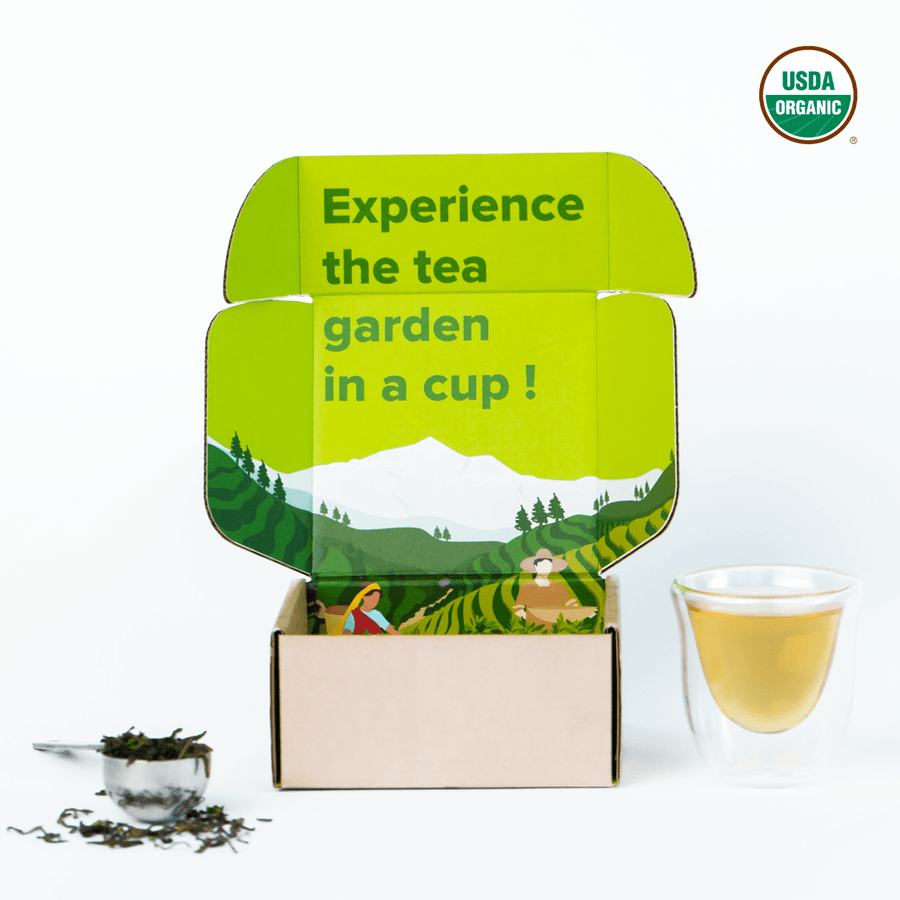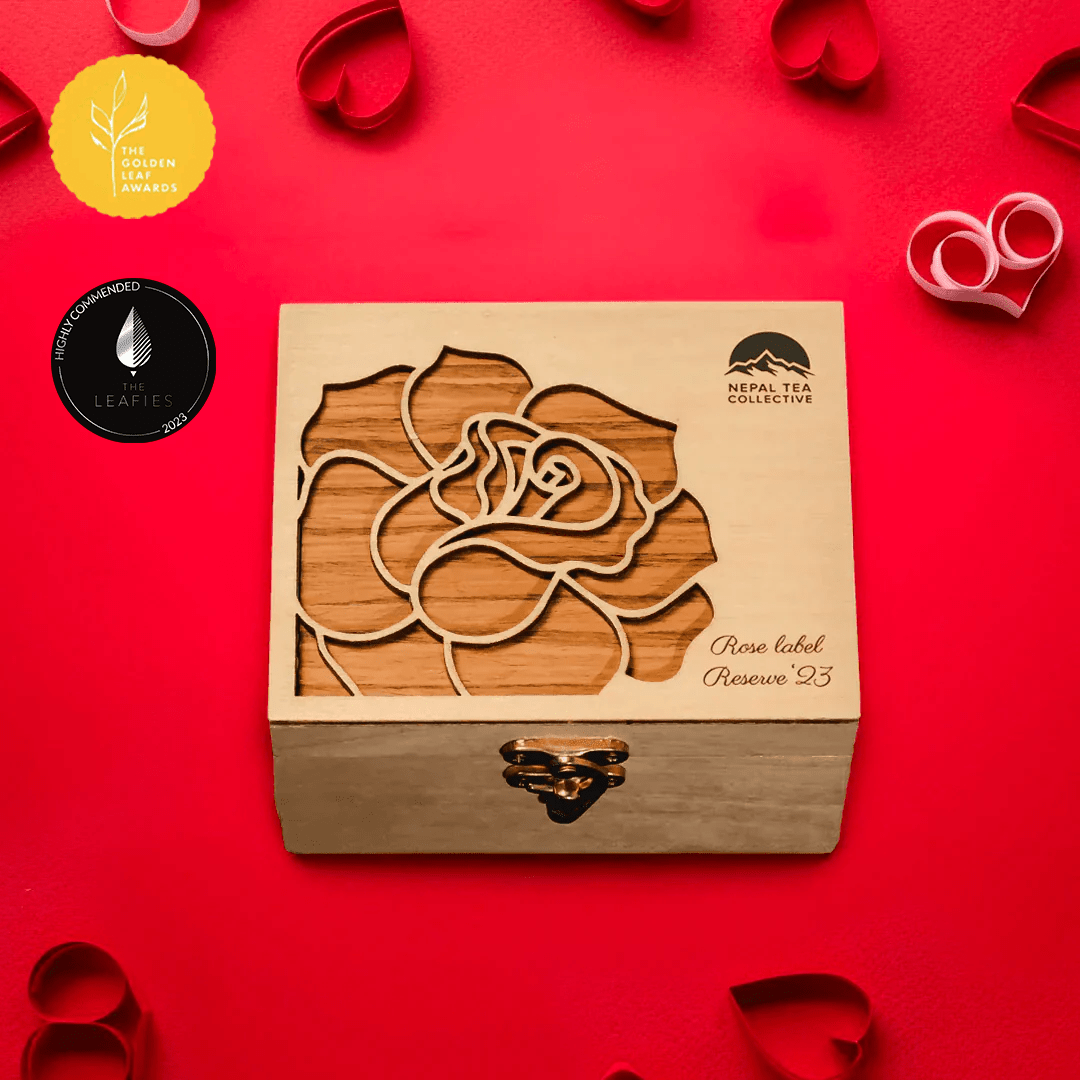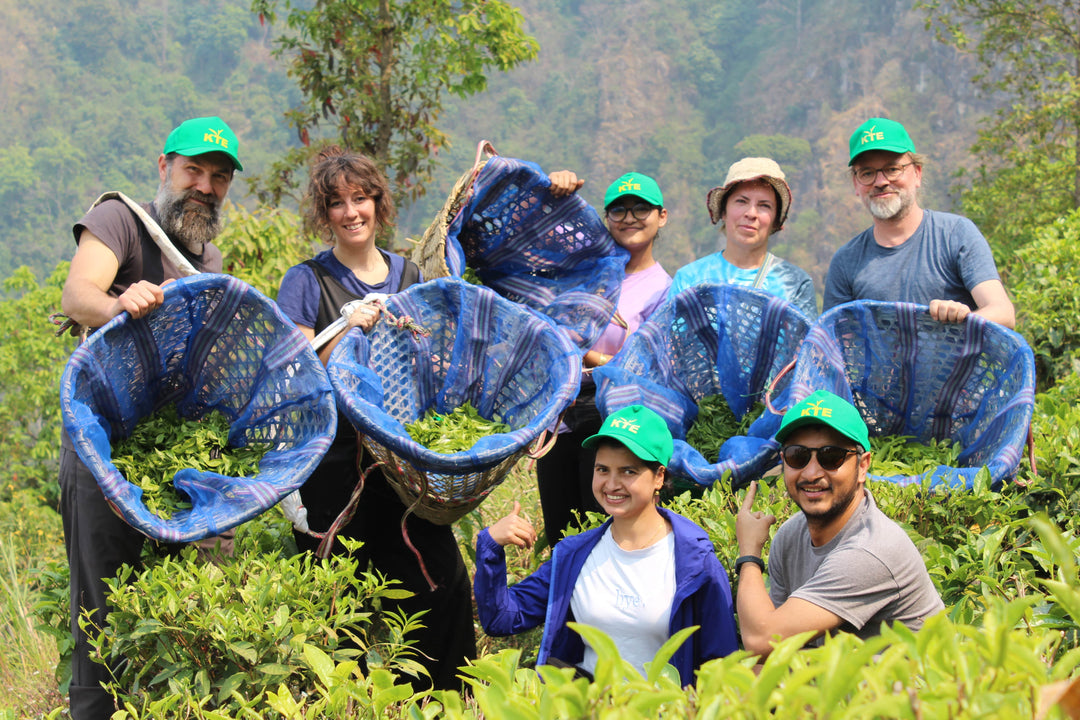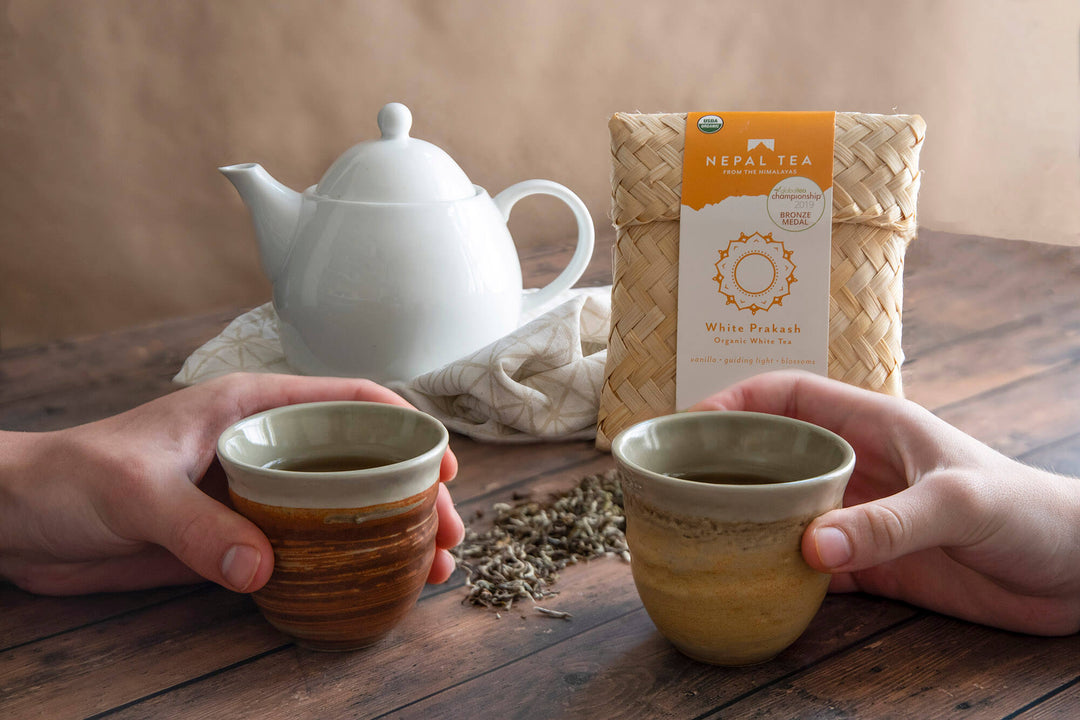First Flush Stories: Amigo's Spring Adventure
When I heard that our First Flush of 2024 was ready for plucking, I booked the first flight out towards Phidim. I couldn’t wait to get there! I had heard fantastic things about Spring in the East of Nepal, and my expectations were running high. In my imagination, lush tea gardens swept over the mountains all the way from Illam to Phidim, bracketed by the gorgeous spring forest flowers that you see in any scenic postcard from Nepal.
I was in for a shocking let down once I landed in Illam. The whole ride, I kept my eyes on the tea hills, hoping to catch a glimpse of green. But all I saw, from Bhadrapur to Kanyam, were pale yellow bushes, still dormant from the winter season. Even though Illam is supposed to be Nepal’s tea capital, not a single tea leaf was ready for plucking. This, I learned, was because Illam is a region that usually experiences way more rainfall during the spring. Until and unless the tea plants soak up some rainwater, they can’t blossom. Because of climate change effects, altered rainfall patterns, the world famous spring harvest was delayed in the tea capital. I felt completely let down.
I wasn’t sure if the First Flush harvest was ready up on our family farms, which lie higher up in Phidim, Panchthaar. Going by how things were in Illam, I was almost sure that we’d been mistaken. I wanted to see for myself, so I rushed up to Phidim without wasting another breath.
When I got there, all the energy and hope that had fizzled away down in Illam now returned to me with full force. Our family farm was awake! The tea plants were tipped with bright, incredibly vivid green leaves that were young, tender and ready to be plucked. Our farm was abuzz with excitement, hope and renewal. I learned from our team on the ground that not only were the tea bushes on our farms some of the first to open their leaves, the new leaves were also brighter and greener than they had ever been!
If I’m not mistaken, Nepal’s very first and earliest First Flush harvest happened on our family farm. And to sweeten the pot, this harvest was bigger and better than any Spring we’ve ever seen on the tea farm in forty long years!
After a long and dry winter, this Spring harvest has washed a new sense of hope and togetherness over our family farm. Though our farmers use the misty winters to cultivate yacon and ginger, it is undeniable that their heart truly belongs to tea.
The culture on our tea farms is such that the first harvest, usually carried out in consultation with astrologers to ensure an auspicious time for harvest, is believed to be a signifier of all the harvests to follow. A bountiful, green and fragrant harvest like this years’ is a wonderful sign for the year to come. This has instilled hope in all the farmers – a hope that is palpable and contagious.
As soon as harvest was over, it was all hands on deck at our tea factory. The same excitement was bouncing off every factory worker and tea producer I met, and everyone was experimenting with what they all called the best Spring harvest they had ever seen on our farms. Everyone was experimenting too – some even working on different grades of the First Flush, creating smoky batches of the young tea leaves.
After every harvest, and particularly the First Flush, a tea tasting ceremony is hosted at our factory, hosted by the producer making the teas. This was where I had my first taste of our First Flush 2024, expertly brewed by the skilled producer. Though I’m not as familiar with the nuances of flavors and fragrances as our team on the ground is, the very first sip blew me away. It was so sweet, so fresh, that I had the impression that I had bitten into some fresh fruit, with extremely smooth, floral and light vegetal undertones. I had never had anything like it.
I was in awe. It is a special thing to be able to try the Spring harvest, right on the farm, amidst the breath-taking beauty of the Himalayan spring-time. The tea gardens of Phidim lie at a height of upto 5000 - 6000 ft above sea level, lending itself to stunning green slopes that are watered by the snow-melt fresh waters of the Himalayas. As some of our tea lovers who visit our farms on our tea tours testify, standing among the waist-high tea bushes, feet planted on the rich and dark soils of the Himalayan foothills, and tasting the delicate and aromatic teas nurtured by this very region, is like having an intimate connection with nature. This kind of beauty makes a deep impression, and the flavors of the fresh tea lingers for long after, imparting the uplifting flavors of the tea mountains to your senses.
For myself, this experience never gets old. But being there in Spring revealed so much more to me about the teas I have grown to love. Here, tea was more than just a crop – tea was precious, a sign of blessings to come, and in other parts of Nepal, a sign that there are larger problems at hand with our Earth that we must tackle now, before it is too late. In both cases, tea brings communities together and instills hope, and not just amongst farms but also among tea lovers. I know that as you sip on the sweet and fragrant brew of our Spring First Flush ‘24, you will also be moved by the stories of our sweet mountain gardens and its beautiful communities.
















Leave a comment